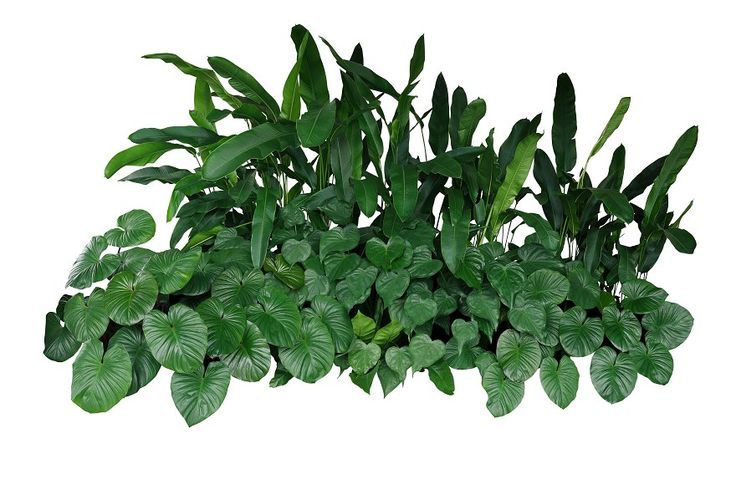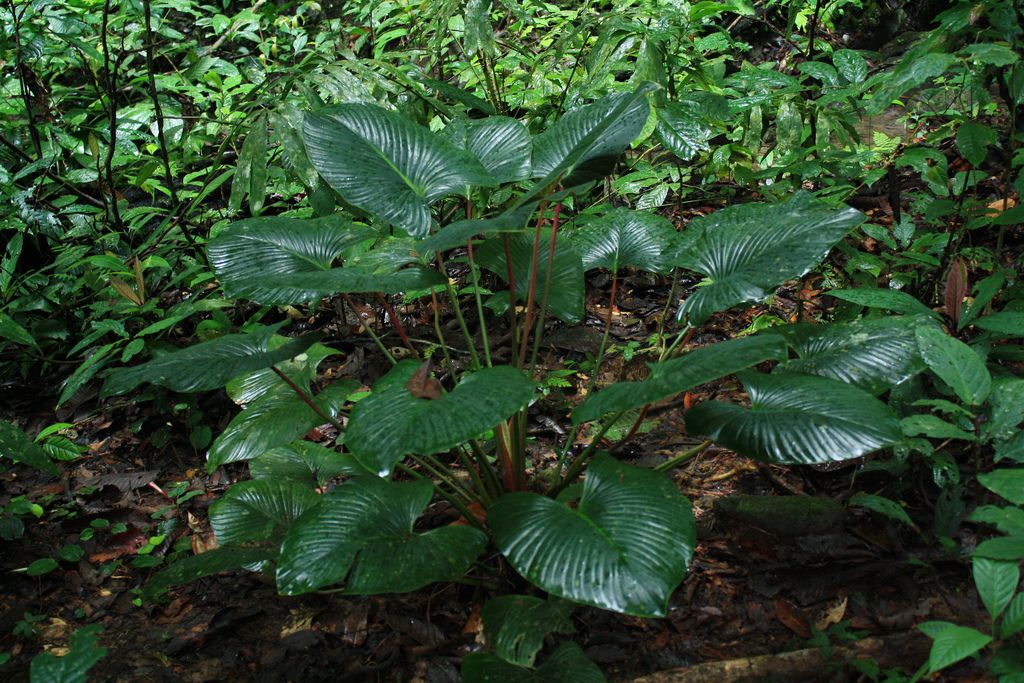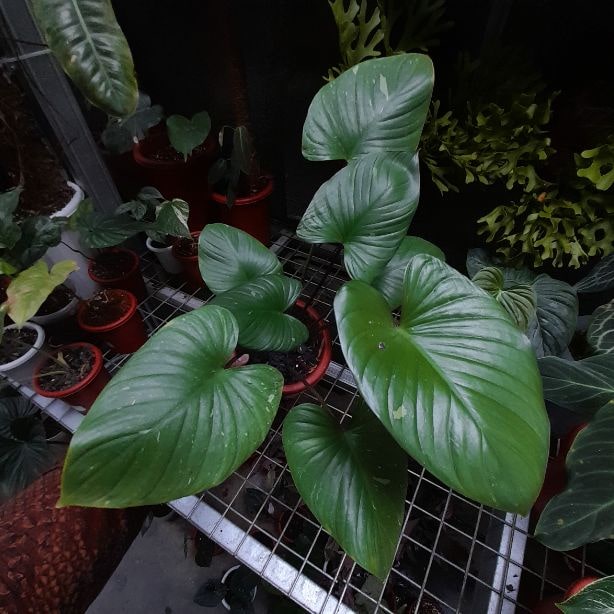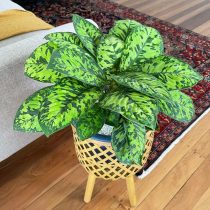If you are tired of classic spathiphyllum and dieffenbachias, you are ready for more complex care for the sake of decorativeness, you should turn your attention to the spectacular large-leaved plant – homalomena.
Huge leaves in lush bushes stand out pleasantly against the background of indoor classics. But chamelomena cannot be called a plant for any home and place.
To make the leaves look truly luxurious, you must not forget about the need for high air humidity and constant soil moisture. Lighting plays an important role in the health and color of this plant.
Table of Contents
Description of The Plant
Homalomena as they like to call it in some flower centers, entered the list of popular decorative foliage plants not so long ago.
It is advertised as an alternative to spathiphyllum, aglaonemas, and dieffenbachias, forgetting to mention that, in addition to its advantages, this plant is also much more capricious.

It is, indeed, partially similar to Dieffenbachia, but not in the shape of the leaves and growth rate: the lower, “rosette”, slow-growing homalomena is not so deformed and is much more “stable”. Homalomena differs from Aglaonema in having leathery, shiny, bright leaves that bloom differently.
It is a showy evergreen perennial with very large leaves. It pleasantly surprises with its compactness, about 25 cm high, but thanks to the huge leaves the plant seems bulky. The rosettes are dense, thanks to the size of the leaves sticking out in all directions, deceptively spreading.
Basal, with a long, reddish-crimson thin petiole, ideally heart-shaped, the leaves of Homalomena grow up to 20 cm in length with a slightly smaller width.

It is considered a model of beauty in dark green shades – olive, emerald, silver… The plant is very variable, it can be either plain or colored with spots, often with colored veins. In this case, decorative forms most often cannot be identified at all; homalomena remain nameless.
Its blooms are considered extremely rare. The plant produces long flower stalks, crowned with the usual inflorescence cob with a pale light green cover, so often found in its fellows.
Flowering often harms the decorative appearance of leaves, causing them to accelerate their aging, so this plant can be immediately limited in this parameter by removing flower stalks when they appear.
Types of Indoor Homalomena
There is only one species on sale today that is less demanding of extremely high air humidity.
Wallace’s wallisii is the most common species with leaves up to 20 cm and numerous variegated varieties. The most common cultivars are “ Camouflage”, whose spotted colors are compared to a military uniform, and “Emerald Green” with a rich emerald hue.
Much less common is the “greenhouse”, more capricious reddish homalomena (rubescens) – a species valued primarily for its bright crimson petioles with leathery, very bright leaves.
Growing Conditions
This plant is often not liked even where its relatives grow well. The degree of capriciousness is almost unpredictable; sometimes the homalomena likes an unsuitable place, but more often it suffers even in ideal conditions.
Lighting and Placement
Homalomena is a lover of intermediate, diffused, but still bright lighting. On southern, western, and even eastern window sills it should be shaded from direct midday sun or placed in soft partial shade near the window.

If the plant is “accustomed” to a more modest level of illumination, it is better to transfer it to bright light gradually, adapting. The plant signals the need for more light by dropping the lower, older leaves and shrinking new ones.
The plant can be grouped with other plants; they never get lost against the background of their neighbors and always emphasize their advantages.
Temperature and Ventilation
This is a heat-loving plant that does not tolerate temperatures dropping below 15 degrees. The optimal growing range for Homalomena is 16 to 20 degrees in winter and 23 to 25 degrees in summer.
It is not afraid of heat, it grows quite well even at temperatures above 25 degrees Celsius, provided that it is properly cared for.

Extremely sensitive to drafts, homalomena requires very careful but regular ventilation. They cannot take it out into the fresh air even in the middle of summer.
Plant Care at Home
Extreme sensitivity to even slight drying out of the soil, low humidity, and the habit of withering and curling leaves at any oversight – homalomena rarely copes with lapses in care.
Watering and Air Humidity

The decorative effect of homalomena directly depends on the stable humidity of the substrate. Between waterings, more than 4-5 cm of soil at the top of the earthen ball can be allowed to dry out.
Focusing on leaf wilting is convenient, but dangerous; constant stress is not good for the plant. Over-moistening is undesirable to the same extent as for other plants.
In winter, watering is reduced only at temperatures below 20 degrees, focusing on the usual humidity.
The water should be soft and several degrees warmer than the air in the room. Homalomena is excellent for growing with self-watering systems and hydroponics.

For homalomena, it is extremely important to maintain high levels of air humidity. At temperatures above 18 degrees Celsius, indicators should not fall below 70%.
Spraying is welcome, but this is rather an additional measure because a truly comfortable environment for this plant can only be created by installing a humidifier (for example, a tray with wet pebbles).
The leaves need to be kept clean at all times and regular warm showers should not be neglected, creating the most “tropical” conditions possible. Of course, ideally, homalomena should be displayed in a window, greenhouse, or under a cover.

Top Dressing and Fertilizer Composition
Fertilizers for homalomena should only be applied in liquid form, along with water for irrigation. And only during the active growing season. The optimal frequency of feeding is every 2 weeks.
Fertilizers for decorative deciduous plants with an organo-mineral composition are ideal for this plant. You can simply alternate mineral and organic fertilizers.
Also explore optimal growth strategies with our comprehensive guide on Cactus Fertilizer, ensuring your cacti thrive in ideal conditions. Dive into the world of plant care with insights on Organic Bone Meal Fertilizer, providing holistic nourishment for your plants. Elevate your gardening expertise with these essential resources.
Pruning and Formation

Only damaged leaves that have lost their decorative properties are removed from the plant. They are cut whole with the cuttings. If flower stalks are not removed before blooming, it is better not to delay pruning them after wilting.
As soon as it becomes obvious that the side shoots are shading each other, the homalomena need to be rejuvenated by planting and dividing.
Transplantation
It is not worth replanting a large plant in the autumn-winter period, and even when replanting from May to the end of summer, homalomena often “freeze” in growth and lose more leaves than with a regular transplant in early spring.

The roots develop faster than the above-ground parts; replanting is necessary annually with rare exceptions.
For homalomena, you should carefully select the size of the pots. The plant prefers tight spaces; the volume of the container should correspond to the size of the root ball, with an increase of 1-2 cm.
Any soil mixture with a fairly loose texture that is resistant to compaction and acidity within the neutral and slightly acidic range (pH from 6.0 to 8.0) is suitable.

Complex, nutritious soils with peat and turf soil are preferred. Of the ready-made substrates, soils are best suited for decorative foliage plants. It is advisable to additionally add a portion of crushed sphagnum to the substrate, and, if possible, coconut fiber.
This is a rare plant whose roots can be exposed (if there is no need, it is still better not to do this). When replanting, you should try to straighten the roots and direct them evenly and downward, making sure that there are no bends.
Roots that are too long can be shortened by treating the cuts with charcoal. The drainage at the bottom of the pots should be high and coarsely fragmented.
Reproduction
This plant is propagated at home in only one way – by dividing adult plants, and lush bushes. You can simply divide the bush into 2-3 large parts, or you can cut off fairly small lateral, little shoots with at least 2-3 leaves. The main thing is that the rosettes form their roots and that the cuts are carefully processed.
Diseases & Pests

Sensitively reacting with burns to direct sunlight and quickly “decorating” with dry edges of leaves at the slightest drop in air humidity, homalomena does not like any extremes.
Among the pests found on this plant are spider mites, mealybugs, whiteflies, scale insects, and false scale insects. Bioinsecticides, and an infusion of garlic, and yarrow will help in the early stages, but if the insects have spread heavily, it is better to choose stronger insecticides.








